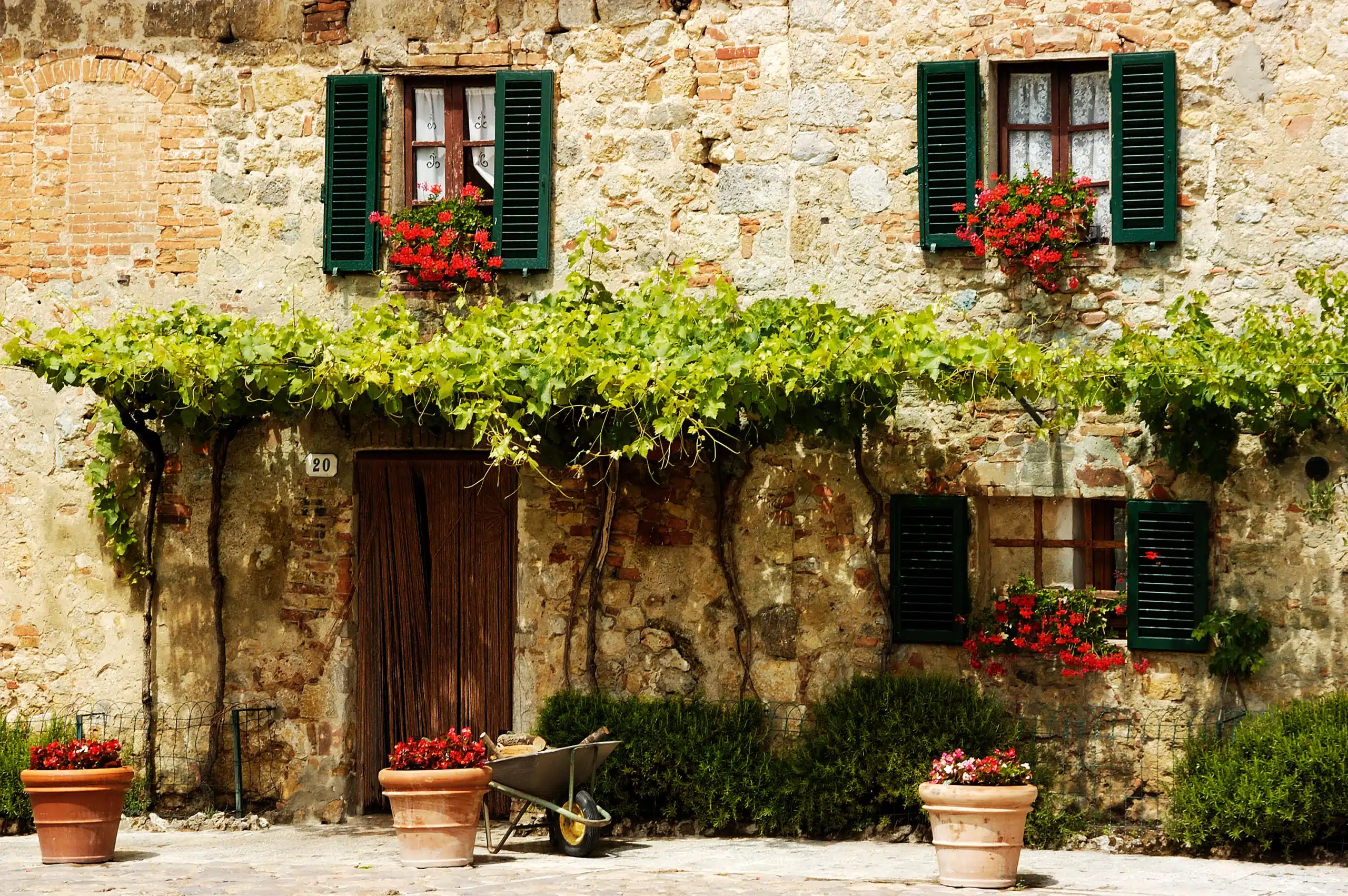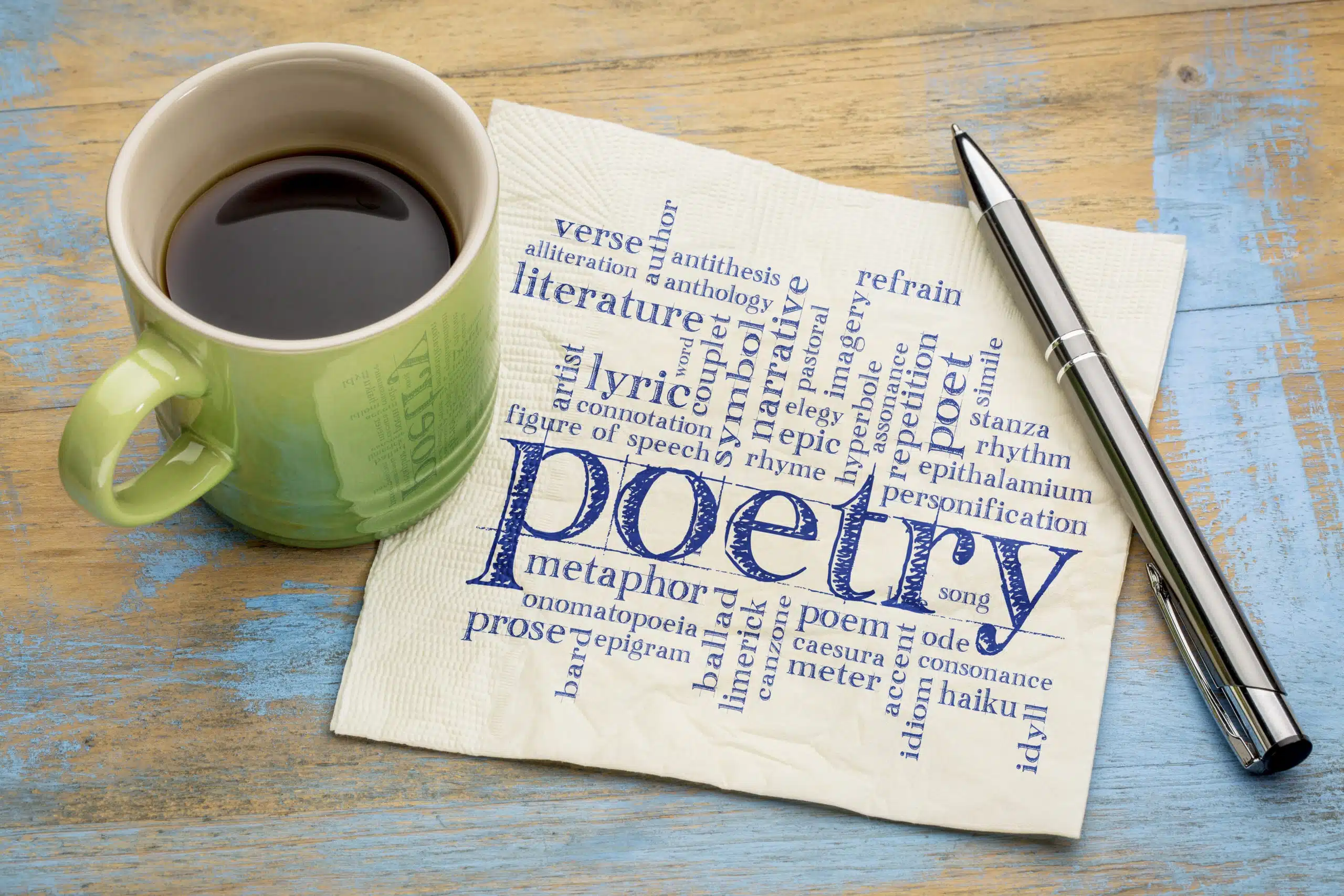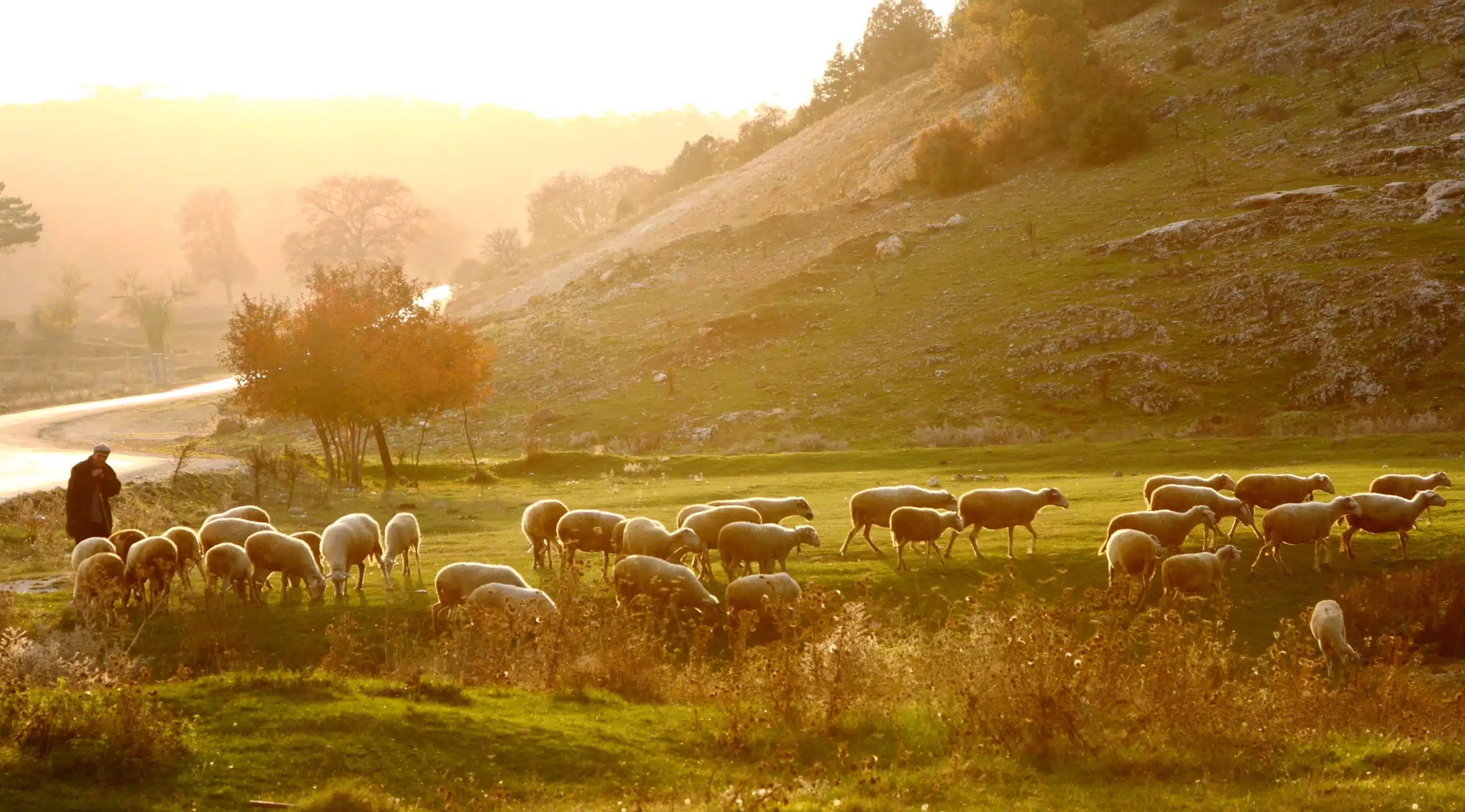Here’s what the Villanelle poetry form is:
A villanelle poem is a poem of French origin, consisting of five three-line verses (tercets) and finally, one four-line stanza (quatrain).
The villanelle poem type is a favored poetry form by many poets, especially during the late 16th century.
So if you want to learn all about the Villanelle poetry type, then you’ve come to the right place.
Keep scrolling down!
- Alexandrine Poetry Form: Celebrate Gallant Feats
- Rondine Poetry Form: Cultivate Poetic Power
- Rondeau Redouble Poetry Form: Versify in Tandem
- Rondel Supreme Poetry Form: Inscribe Grandeur
- Huitain Poetry Form: Revolve in Octave Cadence

Forms of Poetry: The Villanelle

Villanelles are a type of formal poem with a tight emphasis on repetition and rhyme originating from France.
The word “villanelle” can trace its roots back to the Latin villanus, referring to farmhands.
This etymology seems strange until you realize that, when the form was still young, it was distinctly used for pastorals (poems about simple rural life).
Note that villanelles are an advanced form of poetry.
This article will assume you know basic poetry terminology such as rhyme scheme, refrain, meter, formal poetry, stanza, etc.
These terms are essential to even begin discussing villanelles, so you’ll need to brush up on your vocabulary and come back to this article if you’re unclear about any of them.
In the modern-day, villanelles are notorious for how difficult they are to successfully write.
This is not what one would consider an ‘entry-level’ branch of poetry, but they nonetheless are one of the more popular forms of formal poetry, with the challenge being part of their appeal.
Basic Properties of the Villanelle

| Rhyme Structure | Fixed, heavily utilizes refrains |
| Meter | Varies, predominantly Iambic |
| Origin | France; the modern form started to emerge in the early 17th century |
| Popularity | A favorite of scholars in the 19th and 20th centuries; most villanelles have been written in English |
| Theme | Routinely expresses obsessive cyclical thoughts |
How Are Villanelles Structured?

Modern villanelles are made up of 19 lines.
These are specifically five tercets (stanzas with three lines) and one quatrain (a stanza with four lines).
The first and third lines of the first tercet are repeated alternately at the end of each subsequent stanza.
The final stanza includes both repeated lines.
A successful villanelle will make this repetition feel natural in some way, occasionally even making slight adjustments to the grammar or wording of the refrains as they repeat to better suit individual parts of the poem.
Some writers are even capable of using context to give the refrains a different meaning at different points despite not changing the wording, but this takes a great deal of practice and forethought.
Due to the repetitive nature of the villanelle, this is a form often paired with psychological themes such as obsession.
This turns the repetition into a feature instead of a limitation, as the repeating lines become a structural metaphor for the speaker’s thoughts going in circles.
The rhyme scheme of a villanelle is ABA ABA ABA ABA ABAA, and as such demands that the writer chooses solid end sounds that can be easily repeated, else they may find themselves running out of rhymes.

This is slightly mitigated, of course, by the refrains.
The repeated lines always use the ‘A’ of the rhyme scheme.
If you were to add those in, signifying them with ‘1’ and ‘2’ then you would end on a structure of 1B2 AB1 AB2 AB1 AB2 AB12.
Of course, while the repeated lines do slightly ease the difficulty of finding end rhymes for ‘A’ they do not make it especially easy, nor do they do anything for the ‘B’ lines.
On top of that, the poet is tasked with making the flow of the poem sensible while micromanaging both the rhyme scheme and the refrains.
While villanelles do not technically require meter, most villanelles of recent centuries have used meter, upping the difficulty significantly.
To put it simply, writing a villanelle is a rite of passage that proves a certain level of mastery.
Even writing a mediocre villanelle is somewhat impressive but good villanelles stand as certifiable proof of a poet’s ability.
Example of a Villanelle

Do Not Go Gentle Into That Good Night by Dylan Thomas
Do not go gentle into that good night,
Old age should burn and rave at close of day;
Rage, rage against the dying of the light.
Though wise men at their end know dark is right,
Because their words had forked no lightning they
Do not go gentle into that good night.
Good men, the last wave by, crying how bright
Their frail deeds might have danced in a green bay,
Rage, rage against the dying of the light.
Wild men who caught and sang the sun in flight,
And learn, too late, they grieved it on its way,
Do not go gentle into that good night.
Grave men, near death, who see with blinding sight
Blind eyes could blaze like meteors and be gay,
Rage, rage against the dying of the light.
And you, my father, there on the sad height,
Curse, bless, me now with your fierce tears, I pray.
Do not go gentle into that good night.
Rage, rage against the dying of the light.
The above example, by Dylan Thomas, may very well be the most popular villanelle ever written.
Calling it an achievement to write a villanelle that appeals to both casual readers and to scholars would be an understatement, yet Thomas pulled it off with aplomb.
As expected of a villanelle, the usual structure of rhymes and refrains is represented well here.
Of particular note is that this entire villanelle is written in iambic pentameter, a practice that became common in the 20th century.
The iambic meter ensures that the last syllable of every line will be stressed, making the divisions between lines feel decisive and absolute.
In this villanelle, the meaning and form of the refrains are fairly static, right down to the grammar and capitalization.
Thomas uses the villanelles to give his speaker expressive desperation as he repeats them, presumably beside his father’s deathbed.
Repeatedly and emphatically he proclaims the words of the refrain, encouraging resistance to death throughout the poem.
Note that Thomas deliberately chose two end sounds that are easy to repeat in English.
The “night” and “day” of the first two lines in the poem are both words with various rhymes to choose from, as showcased throughout the remainder of the poem.
History of Villanelles

Villanelles originally had no fixed form.
They were a French take on the pastoral, poems meant to glorify simple, rural living as opposed to city life.
At this time, they were essentially musical ballads depicting themes such as farming and shepherding.
The villanelle’s induction into formal poetry is credited to Jean Passerat and his “Villanelle (J’ay perdu ma Tourterelle).”
Funnily enough, villanelles eventually evolved to be more popular in English than in any other language, though not nearly as prominent as simpler forms like sonnets and ballads.
This was in part thanks to the works of writers such as Oscar Wilde and Edmund Gosse.
Tips for Writing a Villanelle

First and foremost, accept that your first attempt probably won’t be groundbreaking.
This is true with any form, but villanelles, in particular, stand as one of the hardest forms to master.
Focus on writing a villanelle that has no set meter first.
Juggling the rhyme scheme and the refrains will be enough for your first attempt.
It’s typically best to choose the refrains for your villanelle before you even begin writing the poem.
These are easily the most important pieces of the poem, for various reasons.
Like with the example poem, prioritize end sounds that are easy to repeat.
If one line of your villanelle ends in “orange” then you’re in for a horrible experience.
It would be a good idea to choose lines that are declarative and that can stand alone, if necessary.
If both refrains are complete sentences, then there’s less pressure to make nearby lines flow into or from them, allowing for a greater degree of freedom in the building of the poem.
Before even beginning on a villanelle, I would wholeheartedly recommend mastering easier forms like the popular Shakespearean sonnet, since the skills you learn there will carry over into more difficult forms.
I can assure you that you will never think any writing task is beyond your abilities after you’ve successfully finished your first metered villanelle.
If you need to boost your confidence as a writer, then mastering this form will certainly be a step in the right direction.
Poet’s Note

Villanelle and villain actually are related in terms of their etymology, as both trace eventually back to the Old French word villain.
This is a serendipitous coincidence since the knuckle-crunchingly difficult to write villanelle is clearly the root of all evils.
Comprehensive Collection of Poetry Forms: Craft Words Into Art

Dare to traverse the entire spectrum of poetic forms, from the commonplace to the extraordinary?
Venture from the quintessential Sonnet to the elusive Mistress Bradstreet stanza, right through to the daunting complexity of Cro Cumaisc Etir Casbairdni Ocus Lethrannaigecht.
For those with a zeal to encounter the full breadth of poetry’s forms, this invitation is yours.
Start exploring the vast universe of poetic ingenuity with our comprehensive array of poetry forms right now!
